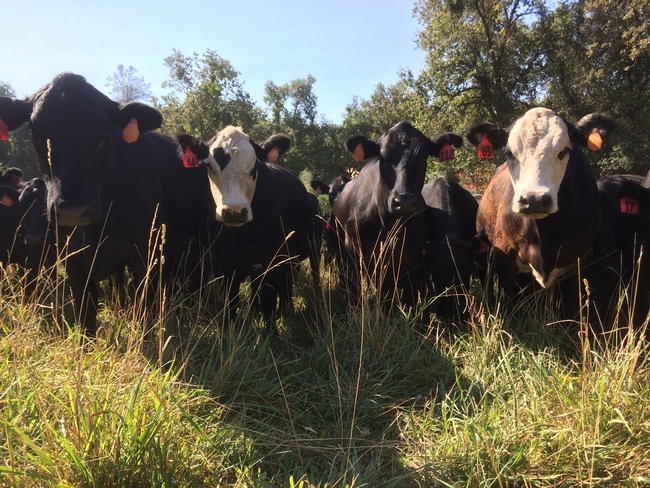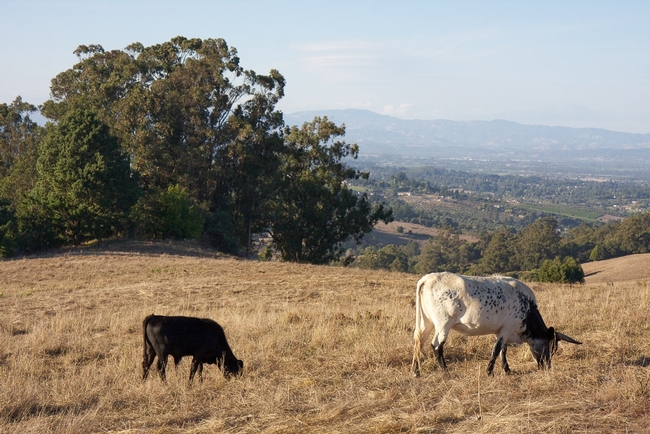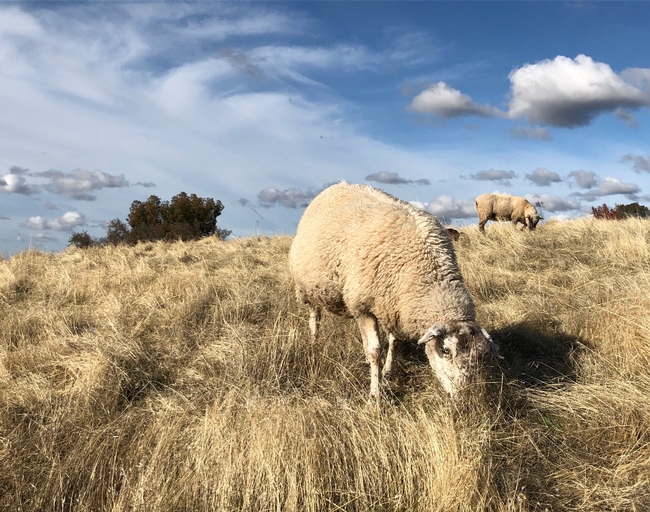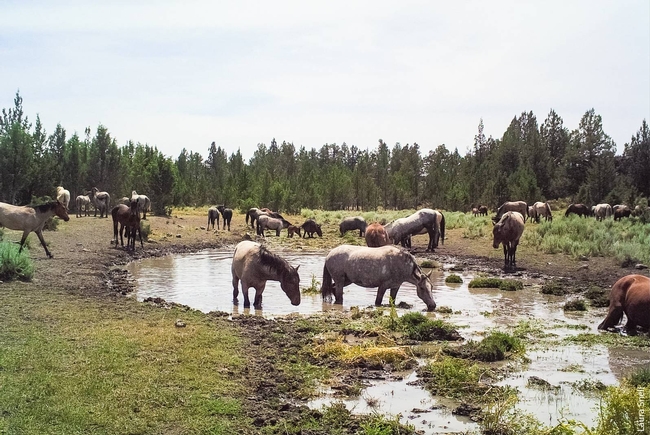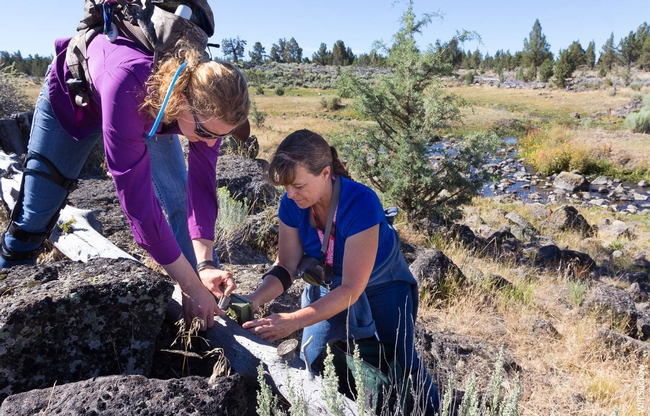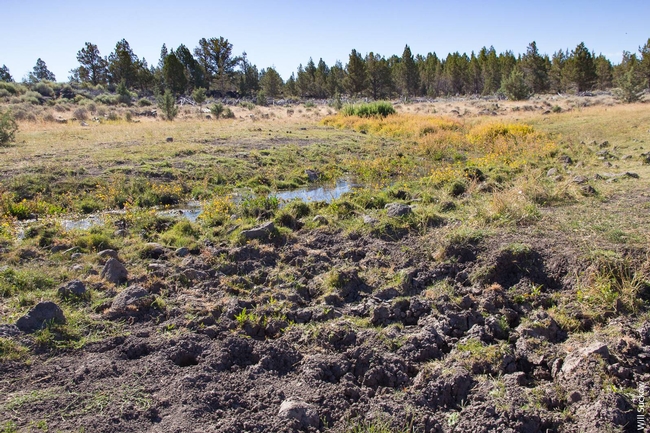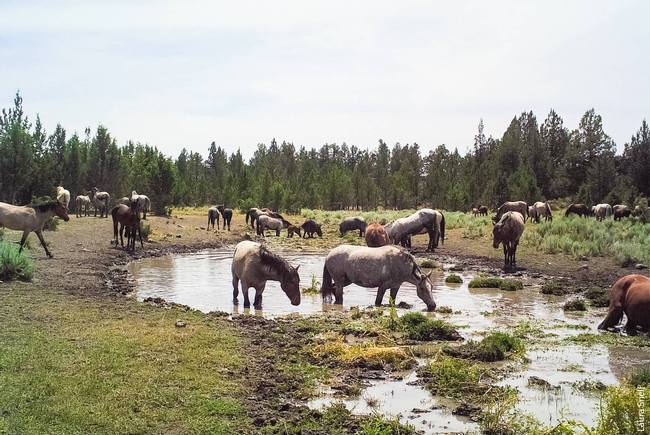Posts Tagged: Laura Snell
Livestock grazing helps California tackle wildfire
California is searching for solutions to the wildfire crisis. Livestock ranchers believe they can help.
At the 14th Annual Rangeland Summit in Stockton in January, more than 150 ranchers, public land managers and representatives of non-profit organizations that work on land conservation gathered to share research and experiences that outline the value of cattle and sheep grazing on rangeland.
Since California was settled by Europeans, cattle and sheep have been an integral part of the state's history.
“Cattle can control brush,” said Lynn Huntsinger, UC Cooperative Extension specialist at UC Berkeley in a presentation on brush management. She discussed research she conducted in the early 1980s to understand the role of cattle in Sierra Nevada brush control.
“We need to make livestock into firefighters,” she said. “Constant, deliberate, targeted grazing is needed for fire management.”
However, thick, overgrown brush requires intensive treatment that cattle can't handle on their own.
“You have to start from a good place,” Huntsinger said. “Start early, such as post fire. Plan when you have a blank slate for the forest you want.”
The tragic loss of homes and lives to wildfire in the last few years has increased the public demand for answers and action. However, the reasons for greater frequency and intensity of wildfire are not well understood.
“Is it climate change? Past decisions? Land use? What can we do about it?” asked UC Cooperative Extension specialist Van Butsic. “Research.”
At the summit, Butsic presented the results of his recent research to determine whether ownership has an impact upon whether land will burn. He and his colleagues studied the burn histories of forest and rangeland areas that were matched with the same characteristics, except in ownership.
“We controlled for all factors – slope, elevation, the likelihood of ignition,” he said. “We found that on forest and rangeland, federal ownership led to .3 percent higher fire probability. Ownership is dwarfing the impact of climate change.”
There is still much more research to be done.
“We can't say the impact of grazed vs. ungrazed land,” Butsic said. “We also need to look at fire severity as well as fire frequency.”
The UC Cooperative Extension advisor in Modoc County, Laura Snell, shared preliminary results at the rangeland summit that provide information for landowners making decisions about returning livestock to burned areas.
She and a team of colleagues studied the fire history of U.S. Forest Service and Bureau of Land Management rangeland in Lassen and Modoc counties where fires had burned through 5, 10 and 15 years before. The dataset included information about whether the land was “rested” for two years after the fire, or whether livestock were returned to graze soon after the blaze.
The scientists set out to determine whether fire intensity and climate at the site (measured by soil temperature and moisture) had an impact on the future diversity of plant species and growth of cheat grass, an invasive species that animals don't like.
“No matter what we did, graze or not graze, after 15 years, the species richness stayed the same,” Snell said. “Grazing was not the driving factor.”
The results are also important in terms of fuels accumulation and the prevention of future wildfires.
“Federal land managers have typically used a policy to rest the land for two years after a fire. During the interval, the fuels sometimes burn again and livestock producers have to wait another two years,” Snell said. “Our research showed you don't necessarily need to rest the land after the fire.”
Two ranchers who were recently impacted by wildfire presented their experiences and perspectives during the rangeland summit.
Mike Williams of Diamond W Cattle Company had livestock on 6,500 acres of leased land in Ventura County when the Thomas Fire ignited on Dec. 4, 2017. Over more than a month, the fire burned 281,893 acres and consumed 1,000 structures.
Williams had stockpiled feed on certain pastures by limiting grazing, which during the fire turned into hazardous fuel.
Adam Cline, rangeland manager for the Yocha Dehe Wintun Nation Preserve in the Capay Valley, had a similar experience when the County Fire burned more than 90,000 acres in western Yolo and eastern Napa counties in June and July 2018. To reserve feed for later, Cline had left 2,500 pounds per acre of residual dry matter on grazing land as a drought mitigation strategy. He said he plans to reconsider this grazing plan.
“Now, cattle feed looks like a lot of fuel,” he said.
Federal officials are reducing the wild horse herd in Modoc County
Officials with the Modoc National Forest are rounding up 1,000 wild horses on federal lands and putting them up for sale and adoption, reported Christina Maxouris and Brandon Griggs on CNN.com
About 4,000 wild horses live on Devil's Garden Plateau, a protected territory inside Modoc National Forest near the Oregon border. It's home to the largest herd of wild horses in the country managed by the U.S. Forest Service.
"With a population growth rate of 20-25 percent, 800-1,000 wild horses will be born on the Devil's Garden this year, making these small removals negligible," said Laura Snell, UC Cooperative Extension advisor in Modoc County.
Snell's research on wild horses at Devil's Garden was chronicled in California Agriculture journal by executive editor Jim Downing. The federal government has determined the ideal horse population on the 230,000 acres of wild horse territory is no more than 402, however, more than 4,000 wild horses are running on the land.
The current federal horse gathering was prescribed by the 2013 Devil's Garden Plateau Wild Horse Territory Management Plan to help address impacts on aquatic resources, wildlife, grazing and traditional cultural practices. Reducing the population will allow range and riparian ecological conditions to recover, while also supporting wild horse herd health by reducing competition for limited food, water and habitat, according to a Modoc National Forest press release.
Most gathered horses are expected to be under 10 years old and will be available for adoption at the BLM Litchfield Corrals. Gathered horses 10 and older will be cared for at the new Double Devil Wild Horse Corrals on the Modoc National Forest and offered for adoption and sale. To adopt a young horse, see https://www.blm.gov/adoptahorse/ or wildhorse@blm.gov. To adopt or purchase an older horse go to https://go.usa.gov/xQ3r3.
Wild horse over-population is causing environmental damage
Most Americans envision healthy mustangs galloping free on the range when they think about the country's wild horse population. But UC Cooperative Extension rangeland advisor Laura Snell sees another image.
In conducting research on the over-populated wild horse territory at Devil's Garden Plateau in Modoc County, she witnesses a group of horses visiting a dwindling and damaged pond.
“Maybe there is enough for the lead stallion and the lead mare to drink. The rest stand there and look longingly at the diminished water source,” Snell said. “They do not seem content.”
The research Snell has underway at Devil's Garden was chronicled in the current issue of California Agriculture journal by executive editor Jim Downing. The federal government has determined the ideal horse population on the 230,000 acres of wild horse territory is no more than 402, however, more than 2,000 wild horses are running on the land.
Snell began working in the remote northeast corner of California in 2015.
“I had Modoc County ranchers coming up to me on my second day of work asking me how to solve the wild horse issue,” she said.
She realized that agencies and authorities responsible for policies that determine the horses' fate, and advocates who lobby strongly that the horses should be cared for humanely, don't see the poor conditions suffered by the horses and the environmental degradation of the land.
“The area is a quarter million acres in size. There are no main roads, so you have to take ATVs to see the horses,” Snell said. “We realized we needed to provide visuals to show people the horses and what the landscape looks like due to unmanaged grazing by the wild horses.”
Snell places wildlife cameras for two-week periods near 24 remote water sources in wild horse territory in Modoc and Lassen counties. At each site, the camera takes a burst of three pictures automatically every 15 minutes; motion detectors on the cameras also trigger a shot whenever an animal enters the field of view.
Preliminary data from 2015 show some striking findings. At one spring site, for instance, more than 71 percent of all animals detected over the sampling period were horses. Cattle accounted for 19 percent and the rest were pronghorn antelope, deer and hawks. The study will continue through 2017.
Wild horses are running in the Devil's Garden territory, and outside the territory, on private and tribal land. Fences don't hold the horses in, Snell said. Federal wild horse management areas are intended for multiple uses, including livestock grazing, hunting, and wildlife habitat. But in Devil's Garden, livestock have been excluded because of the environmental degradation.
“It was never intended to be single use area,” Snell said. “The horses are gorgeous animals, but I also like to see pronghorn, elk and mule deer. Some groups of wild horses are getting large and studs are getting aggressive. I know people who no longer ride their personal horses because it's not really safe with the territorial nature of the stallions.”
The images and data from Snell's research are designed to inform management and policy decisions in hopes of easing the expensive and environmentally harmful wild horse over-population. Already U.S. Representative Doug LaMalfa (R-Oroville) has brought the study to the House Committee on Natural Resources and preliminary results have been shared with Bureau of Land Management's Wild Horse and Burro Advisory Board.


